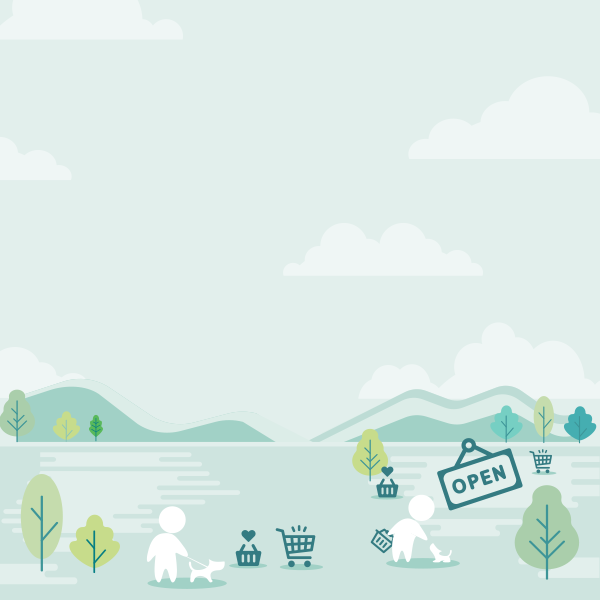A dog that barks can be a huge drain on your relationship. They bark, you shout, they bark more!
It becomes a vicious cycle of noise that only seems to get worse.
Every dog has "a bucket."
Yes, you heard us right. Every dog has a stress bucket that they carry around with them their entire life. This bucket gets filled by exciting events, scary events and even internal events influenced by their general health.

The thing is - as this bucket fills - their BARKING increases. BUT - not just barking. Here are just some of the behaviours we might expect an overflowing bucket to lead to!

Now chances are if you are reading this, then you likely have a dog with a very full bucket. They may bark at other dogs, people or the postman!
The good news!
You can impact how FULL your dog's bucket is, and we are going to show you how.
Believe it or not, brain and gut wellness have a huge impact. And it’s the interaction between the brain and gut that is particularly significant! In fact, if any of these processes are out of whack, it can affect your dog’s behaviour and how they react to the environment, particularly… you’ve guessed it...with barking!
Step 1: Ensuring their Brain and Gut is Ready for Calmness!
Of course, training is crucial to success - and we’ll dive into that below.
However, your dog's brain's neurotransmitters and their gut massively impact how full their bucket is too. In fact, many dogs enter a vicious cycle of increasing reactivity and barking and decreasing calmness because, while your training is telling them to be calm, their brain and their gut (closely linked!) are telling them otherwise!
Enter Calm-K9
So how do you enter the black box that is your dog’s brain and gut? Well, this actually comes from the world of nutrition. Through a combination of brain-supporting L-tryptophan, lemon balm and passiflora and gut-supporting pre and probiotics, owners are seeing transformational results across the world!
Calm-K9 is our natural calming supplement, which incorporates all of this into a simple tasty scoop of superfoods you add to your dog's food every day!
It might just be the missing link to your behaviour success AND unlock real-life results like reduction in barking, walking nicely and reducing reactivity just like it did for 1000s of other dog-owners across the world.
Step2: How Your Dog Spends Their Time Influences How Full Their Bucket Is!
Remember, exciting things AND scary things pay into your dog's bucket. The good news is thatyou have total influence over how your dog spends their time.If you constantly do exciting activities with your dog, and continually rev them up, you can bet their bucket will be more full and, in turn, they'll bark more!
While excitement and higher energy activities are OK in small doses, rehearsal is powerful - and helping your dog embrace calmness will have a huge impact on your dog’s barking.
This is about looking at your dog’s lifestyle as a whole and making sure there is plenty of opportunity for your dog to relax and empty that bucket.
Think about activities you can do with your dog that promote and reinforce a calm state of mind, and help keep that bucket nice and empty.
Step3: Create Calm Zones for Your Dog!
Dogs are creatures of habit. They predict exciting things. Take the example of picking up your dog's lead - we can bet it leads to some bucket filling, right? With this in mind,you can use this doggy skill of prediction toyour advantage. The spaces where you want your dog to be quieter, make sure you make those spaces where they onlypractise calmness.
This means no exciting things should be practised there. What they rehearse, they become!Not only that, you can then inspire calmness!This is where the calmness wheel makes all of that easy!
Step 4: Implement the Calmness Wheel!
You can teach your dog to be calm by implementing the calmness wheel! Think of the calmness wheel as a clock of how your dog spends their day. If you are wanting to grow calmness, you rotate your dog around three areas:
Area 1! Passive Calming Activities
Passive calming activities are activities you can get your dog to do that naturally grow calmness - a little bit like us running a bath and putting on the spa music. For your dog, these activities might include lickableK9-Calm Mats, long-lasting chews and even sniffing! And of course you can double up on the calming benefits by adding a daily scoop ofCalm-K9 to your dog’s K9 Calm Mat.
Area 2! Calmness Protocol
This involveskeeping some of your dog's daily food allowance to one side and using it to reward them for spontaneous moments of calm settling as they happen. What gets rewarded, they rehearse. What they rehearse, they become.
Area 3! Active Rest
This is a crucial area for success.A tired dog is a naughty dog. A well rested dog is a well behaved dog. The challenge is that often our dogs don't truly rest unless we encourage them to do so. A little bit like us taking a trip to a spa, where choice is limited and excitement minimal, our dogs need to have periods of the day where they aren't constantly making choices.
Choice is tiring! How does this spa look for your dog? A puppy pen, a crate, a chill out zone of the house, whatever will limit their choices, they are comfortable in and allow them to switch off.

Conclusion
And there you have it! Buckets, lifestyle and Calm-K9 - the solution to your barking struggles!





















